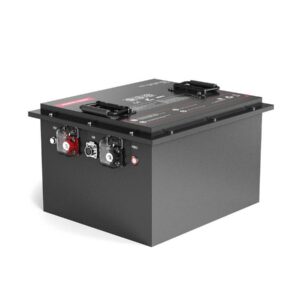
What does 24F mean on a battery?
The designation 24F on a battery refers to a standardized size classification and terminal configuration, primarily used in automotive applications. The “24” indicates the battery group size (length, width, height), while “F” specifies terminal type and placement—typically top-post terminals with positive on the left. This format ensures compatibility with vehicles requiring specific dimensions and electrical connections. For example, a 24F battery might measure 273mm x 175mm x 190mm and deliver 12V/60Ah, fitting mid-sized sedans like Honda Accords. Pro Tip: Always verify terminal orientation when replacing a 24F battery—reverse polarity can damage vehicle electronics.
How to Safely Dispose of and Recycle Car Batteries
What distinguishes a 24F battery from other group sizes?
A 24F battery’s dimensions (273x175x190mm) and left-side positive terminal set it apart. Smaller than Group 34 but taller than Group 35, it’s engineered for Japanese/Korean vehicles requiring compact 12V power with high CCA ratings.

Unlike Group 35’s right-side positive terminal, the 24F’s left-aligned terminals prevent cable strain in tight engine bays. For instance, a 24F battery in a Toyota Camry provides 550 CCA (Cold Cranking Amps) versus Group 35’s 500 CCA in similar conditions. Pro Tip: Use terminal protectors to prevent corrosion—salt exposure accelerates voltage drop in 24F configurations. Transitionally, while voltage remains standardized at 12V, the physical layout dictates application-specific compatibility.
How does terminal orientation affect 24F battery installation?
The F-series terminal layout (positive left, negative right) ensures proper cable reach in vehicles designed for this configuration. Reverse orientation risks short circuits if cables cross.
Incorrect installation attempts, like flipping a 24F battery, may stretch cables beyond safe limits—imagine trying to plug a USB backward. Technically, terminal spacing of 135mm (±2mm) prevents accidental contact but requires precise alignment. Why does this matter? Modern cars with tight engine compartments, like Subaru Outbacks, rely on 24F’s terminal placement to avoid interference with sensors. Transitionally, while adapters exist, they introduce resistance—stick to OEM specifications for optimal performance.
| Terminal Type | 24F | Group 35 |
|---|---|---|
| Positive Position | Left | Right |
| Spacing (mm) | 135 | 135 |
Battery Expert Insight
FAQs
Can a 24F battery be used in a European car?
Rarely—European vehicles typically use Group 94R or H6 sizes. Forced installation risks cable damage or ECU errors due to terminal polarity mismatch.
Is 24F interchangeable with 24R?
No—”R” denotes reversed terminals (positive right). Swapping them without cable extensions may cause electrical shorts.
Are Duracell Car Batteries a Good Choice for Your Vehicle?
What does 24F mean on a battery?
The “24F” on a battery indicates a Group 24 size with a specific terminal orientation: the positive (+) terminal is on the right and the negative (-) on the left when viewed from above. The “F” differentiates it from a standard Group 24, often used in Asian vehicles like Honda and Toyota.
Are Group 24 and 24F batteries the same?
Group 24 and 24F batteries share similar dimensions, but the main difference is terminal placement. Group 24 has the positive terminal on the left, while 24F has it on the right. Both types fit similar vehicles, but swapping terminals without checking polarity can cause installation or electrical issues.
Can I replace a Group 24 battery with a 24F?
Yes, only if the terminal orientation matches your vehicle. A 24F battery has reversed polarity compared to standard Group 24. Physically, dimensions are similar, but incorrect terminal placement can damage electronics or cables. Always confirm polarity before replacement.
What vehicles commonly use 24F batteries?
24F batteries are popular in many Asian vehicles, including Honda, Toyota, and Nissan models. They are ideal for cars requiring slightly taller batteries or higher Cold Cranking Amps (CCA) for reliable engine starts, especially in larger engines.
How is 24F different from other Group 24 variants like 24R or 24H?
The 24F differs mainly in terminal layout and sometimes height. 24R reverses polarity compared to standard 24, while 24H may have slight case or lid design differences. Each variation ensures compatibility with specific vehicle designs without changing battery performance.
Does 24F battery have higher performance than standard 24?
Some 24F batteries are slightly taller and heavier, offering higher Cold Cranking Amps (CCA) and reserve capacity. This makes them better suited for vehicles with larger engines or higher electrical demands, ensuring consistent starting power and reliability.
What size is a 24F battery?
A 24F battery follows the BCI Group 24 standard, approximately 10.25 inches long, 6.8125 inches wide, and 8.875 inches tall. Minor height variations exist for 24F models to accommodate vehicle requirements while keeping a similar footprint to standard Group 24 batteries.
Where can I buy high-quality 24F batteries?
LiFePO4 Battery Factory, powered by Redway Battery, offers high-quality 24F lithium and lead-acid options. OEM and wholesale solutions are available for vehicles, forklifts, and golf carts. Their batteries ensure long life, consistent performance, and factory-competitive pricing for global businesses.
If you want, I can also create a concise comparison table for 24, 24F, 24R, and 24H batteries suitable for your website FAQ section. Do you want me to do that?
